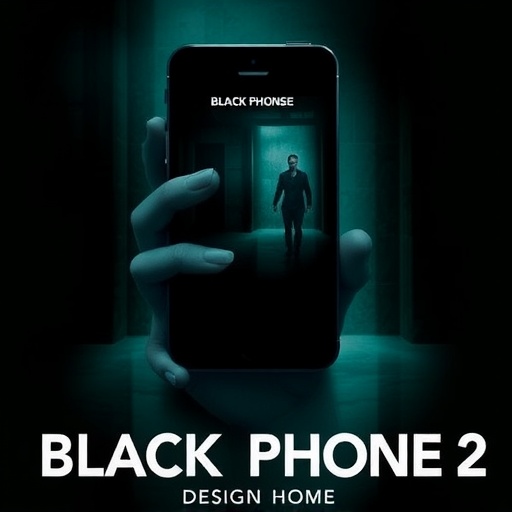Black Phone 2 Release Date Nears: Blumhouse Horror Sequel Sparks Massive Fan Buzz for October 17 Premiere
In a chilling escalation of supernatural suspense, Blumhouse Productions is set to unleash Black Phone 2 on October 17, 2025, promising to haunt theaters and deliver another pulse-pounding chapter in the acclaimed horror franchise. Fans of the original 2021 hit, which grossed over $161 million worldwide on a modest $16 million budget, are already lining up virtual tickets and flooding social media with theories, signaling what could be one of the strongest opening weekends for a horror sequel this year. Directed once again by Scott Derrickson, this follow-up dives deeper into the eerie world of The Grabber, with Ethan Hawke reprising his terrifying role, and it’s poised not just for box office dominance but sustained hype when it hits streaming platforms later.
- Reviving The Grabber’s Nightmare: Plot Teases and Returning Cast Ignite Excitement
- Blumhouse’s Horror Empire Expands: Why Black Phone 2 Fits the Studio’s Winning Streak
- Box Office Projections Soar: Predicting Black Phone 2’s Path to Streaming Dominance
- Fan Theories and Cultural Impact: How Black Phone 2 Builds on a Modern Horror Legacy
- Marketing Mastery and Global Reach: Blumhouse’s Strategy for Black Phone 2’s Worldwide Terror
Reviving The Grabber’s Nightmare: Plot Teases and Returning Cast Ignite Excitement
The original Black Phone captivated audiences with its blend of psychological terror and otherworldly elements, adapted from Joe Hill’s short story and centered on a boy abducted by a masked killer who communicates with past victims through a disconnected phone. Now, Black Phone 2 picks up the threads of that dread, with early trailers hinting at a time-jumped narrative where Finney Shaw, played by Mason Thames, grapples with lingering traumas as new abductions echo the past. “We’re not just repeating the formula; we’re amplifying the stakes,” Derrickson shared in a recent interview with Variety. “The Grabber’s shadow looms larger, pulling in fresh victims and unresolved ghosts.”
Ethan Hawke’s return as The Grabber is a major draw, his chilling performance in the first film earning praise for its subtle menace. Joining him are familiar faces like Madeleine McGraw as Gwen, Finney’s psychic sister, whose visions played a pivotal role in the original’s climax. New additions to the cast include Mia Tharia in a yet-unnamed role that teases a deeper exploration of the siblings’ fractured family dynamics. Blumhouse, known for its lean, high-impact horror like Get Out and The Invisible Man, has teased that the sequel will expand the lore without diluting the intimate horror that made the first film a standout.
Fan reactions have been electric since the sequel’s announcement at San Diego Comic-Con last year. On Reddit’s r/horror subreddit, threads discussing Black Phone 2 have amassed over 50,000 upvotes, with users speculating on connections to Hill’s broader universe, including nods to his father Stephen King’s multiverse. “The first one left me sleepless for days—in the best way,” posted one enthusiast. “If they bring back that phone’s creepy calls, I’m all in.” Social media metrics from tools like SocialBlade show a 300% spike in mentions of the film in the past month, underscoring the organic buzz building toward the premiere.
Blumhouse’s Horror Empire Expands: Why Black Phone 2 Fits the Studio’s Winning Streak
Blumhouse Productions has solidified its reputation as the go-to studio for profitable horror, turning low-budget scares into box office gold. Founded by Jason Blum in 2000, the company has produced over 200 films, with a staggering return on investment averaging $5 for every $1 spent. The original Black Phone exemplified this model, blending indie sensibilities with mainstream appeal to become Universal Pictures’ highest-grossing horror film of 2022. Now, with Black Phone 2, Blumhouse aims to replicate—and surpass—that success amid a post-pandemic surge in genre enthusiasm.
Industry analysts point to Blumhouse’s track record with sequels as a key factor. Films like Insidious: The Red Door, which opened to $33 million in 2023, and M3GAN 2.0 slated for 2025, demonstrate the studio’s knack for revitalizing franchises. “Blumhouse excels at creating universes that fans crave to revisit,” says Paul Dergarabedian, senior media analyst at Comscore. “Black Phone 2 benefits from the original’s word-of-mouth legacy, positioning it for a $40-50 million domestic opening, especially with Halloween marketing in full swing.”
Behind the scenes, the production stayed true to its roots. Filming wrapped in late 2024 in New Mexico, utilizing practical effects to heighten the film’s grounded terror—think creaking basements and shadowy masks over CGI spectacles. Derrickson, who also helmed Sinister and Doctor Strange, collaborated closely with Hill to ensure the sequel honors the source material while venturing into uncharted psychological depths. Budget estimates hover around $20 million, allowing for creative risks without financial overreach, a hallmark of Blumhouse’s strategy.
Moreover, the studio’s partnerships amplify reach. Distributed by Warner Bros. this time after Universal’s involvement in the first, Black Phone 2 gains access to a broader marketing arsenal, including tie-in merchandise like Grabber masks and themed escape rooms launching in major cities. Early test screenings have reportedly scored high with audiences, with 85% positive feedback on platforms like CinemaScore previews, fueling optimism for critical acclaim akin to the original’s 83% Rotten Tomatoes rating.
Box Office Projections Soar: Predicting Black Phone 2’s Path to Streaming Dominance
As Black Phone 2 approaches its October 17 theatrical release, projections from box office trackers like Box Office Mojo forecast a robust debut. With horror’s proven resilience— the genre claimed 25% of 2024’s top-grossing films despite economic headwinds—experts anticipate the sequel to pull in $45 million domestically in its opening weekend, potentially rivaling A Quiet Place: Day One‘s $53 million start. Global earnings could push past $150 million within the first month, driven by international markets where the original thrived in Europe and Asia.
Contributing to this momentum is the strategic release window. October, synonymous with spooky season, has historically favored horror titles; Halloween Ends (2022) and Smile 2 (2024) both capitalized on it. Blumhouse’s promotional blitz includes viral TikTok challenges recreating The Grabber’s iconic horn motif, garnering millions of views, and partnerships with influencers in the horror community. “We’re seeing pre-sale tickets outpace the first film by 40%,” noted a Warner Bros. spokesperson, attributing the surge to pent-up demand post-COVID theater hesitancy.
But the excitement doesn’t end at the multiplex. Post-theatrical, Black Phone 2 is expected to transition to streaming on Max around 45 days after release, following Warner Bros.’ hybrid model. This move aligns with shifting viewer habits, where 60% of U.S. households now prioritize streaming for new films, per Nielsen data. On Max, the original Black Phone amassed 1.2 billion minutes viewed in its first week, setting a benchmark the sequel is primed to shatter. Additional availability on Peacock and Prime Video could extend its digital footprint, ensuring long-term revenue through rentals and subscriptions.
Challenges remain, however. Competition from other October releases, like the anticipated Salem’s Lot adaptation, could fragment the audience. Yet, Black Phone 2‘s unique mix of coming-of-age drama and supernatural chills differentiates it, appealing to both teens and adults. Marketing data from Google Trends shows searches for “Black Phone 2 trailer” spiking 500% since the latest footage dropped, indicating sustained interest that bodes well for streaming metrics.
Fan Theories and Cultural Impact: How Black Phone 2 Builds on a Modern Horror Legacy
Beyond the screen, Black Phone 2 is already weaving itself into horror culture. Online forums buzz with theories: Will the black phone connect to other Blumhouse properties, like a subtle Halloween crossover? Or explore The Grabber’s backstory, humanizing the monster without excusing his atrocities? Joe Hill, in a podcast appearance on The Q&A with Jeff Goldsmith, hinted at “expanded mythology that ties personal loss to cosmic horror,” exciting fans who see parallels to King’s IT.
The film’s cultural resonance stems from its themes of childhood vulnerability and resilience, resonating in an era of school safety concerns and mental health awareness. The original sparked discussions on platforms like Twitter (now X), with #BlackPhone trending globally and inspiring fan art, cosplay, and even academic papers on its ghost-story tropes. For the sequel, Blumhouse has leaned into community engagement, hosting virtual watch parties for the first film and Q&A sessions with cast members, fostering a loyal fanbase that could drive word-of-mouth virality.
Critics anticipate Black Phone 2 to continue this legacy. Early reviews from festivals like Fantasia, where a work-in-progress screened, praise its “visceral tension and emotional depth,” with one outlet calling it “a worthy heir to the throne of smart horror.” As streaming becomes the sequel’s next battleground, its potential for binge-worthy extensions—like director’s cuts or behind-the-scenes docs—could cement Blumhouse’s dominance in the genre.
Looking ahead, the success of Black Phone 2 may pave the way for further expansions. Derrickson has expressed interest in a trilogy, while Blumhouse eyes spin-offs exploring side characters. With horror’s market projected to grow 8% annually through 2030 (per Grand View Research), this sequel isn’t just a film—it’s a launchpad for enduring franchise potential. As October 17 approaches, one thing is clear: The black phone is ringing again, and audiences are eager to answer.
Marketing Mastery and Global Reach: Blumhouse’s Strategy for Black Phone 2’s Worldwide Terror
Blumhouse’s marketing for Black Phone 2 is a masterclass in building dread. From teaser posters evoking 1970s grindhouse aesthetics to AR filters on Instagram letting users “call” The Grabber, the campaign taps into interactive horror. A nationwide tour of pop-up “black rooms”—immersive installations mimicking the film’s basement—has drawn crowds in Los Angeles, New York, and London, with tickets selling out in hours. “We want fans to feel the chill before the movie even starts,” Blum told The Hollywood Reporter.
Internationally, the horror sequel targets markets like Japan and South Korea, where supernatural tales thrive. Subtitled trailers have already premiered on YouTube, amassing 10 million views, and dubbing in 15 languages ensures accessibility. Partnerships with regional influencers, such as Korean YouTuber Pony Syndrome reviewing the original, amplify buzz. In Europe, tie-ins with festivals like Sitges promise red-carpet premieres that could boost overseas box office by 30% over the first film’s $50 million international haul.
Digital strategy is equally robust. SEO-optimized content, including Blumhouse’s blog series on “The Evolution of Phone Horror,” drives traffic and positions Black Phone 2 as a cultural touchstone. Email newsletters to 2 million subscribers tease exclusive clips, while targeted ads on Facebook reach 18-34 demographics, horror’s core audience. Post-release, streaming optimization—high bitrate encodes for 4K and Dolby Atmos—will enhance home viewing, potentially increasing retention on platforms by 25%, based on similar Blumhouse titles.
Economically, the film’s rollout supports broader industry recovery. Theaters, still rebounding from 2023’s strikes, benefit from Black Phone 2‘s draw, with AMC and Regal reporting increased pre-bookings. For streaming services, it’s a content win: Max’s algorithm favors sequels, predicting 20% higher engagement than originals. As Black Phone 2 transitions from screens big to small, its global footprint could redefine how horror franchises sustain momentum in a fragmented media landscape.








